Ad Verification: What the Heck is it?

If there's one adage that everyon e who works in online advertising should keep in mind, it is that accidents happen and something is always bound to go wrong as a result.
One major issue that concerns both marketers and publishers is ensuring that ads appear on intended websites and/or pages, and that they reach their targeted audiences. To help overcome this issue, companies began taking part in ad verification, typically utilizing third-party services to check their ads for any discrepancies that may be hindering optimal delivery. Unfortunately, there was never an established set of criteria that these services, publishers and marketers could follow to let them know that they were using the same procedures as one another during the verification process.
Enter the Interactive Advertising Bureau (IAB), an organization tasked with establishing standards, conducting research and providing legal support for the online advertising industry. In short, its goal is to improve efficiency in and support the growth of the online interactive advertising market.
Recently, the IAB worked on a new initiative in tandem with the Media Rating Council (MRC) to create the Guidelines for the Conduct of Ad Verification. The first, and very legitimate question that many Web pros may have upon first hearing about this is, What exactly is ad verification all about?
 Let the Buyer Beware
Let the Buyer Beware
According to IAB vice president of advertising technology Steve Sullivan, "Ad verification is a way for a buyer to verify, during a campaign, that inventory bought with an insertion order (IO) they signed is fulfilling the contractual agreement between them and the seller."
In other words, ad verification is the process of making sure that a buyer's ad inventory is adhering to the prearranged specifications laid out in the initial agreement by alerting the buyers to any variance from the original deal with the seller. The verification process allows any issues to come to light (and be corrected) in the early stages of the campaign to improve efficiency and save money.
Sullivan is also quick to point out that, "In most cases, these variances are accidental," and usually the result of human, not systemic, error.
Ad verification can be a useful practice for both buyers and sellers of ads. While buyers can use verification services to ensure that their ads are valid because they are meeting the predetermined standards as laid out in the initial contract, sellers can utilize the process as a sort of self-monitoring technique, to make sure that ads are performing properly on their end, which could save them quite the headache in the long run.
Providing a Blueprint
The framework laid out in the previously mentioned guidelines aims to provide a set of common methodologies and practices for ad verification. By presenting this shared set of standards, the IAB can assure both advertisers and publishers that companies engaging in ad verification are on the same, standardized path.
"The guidelines aren't a how-to for ad verification," explains Sullivan. "They represent a criterion that auditors use in the verification process. What this means is that the Guidelines for the Conduct of Ad Verification are just that, a set of benchmarks that verification services will use during the validation process."
With the release of the guidelines, the IAB is able to provide advertising buyers and sellers with information about common methods and practices in mobile, email and leadgeneration campaigns of all types that address a variety of topics, including nested iFrames, geo-targeting IP-based processes and ad-serving prevention, or "ad blocking," among other issues.
Let's look at some of these issues more closely:
iFrames: Many browsers come with unique operational and/or security considerations, which can cause limited visibility when verifying advertising content served in nested iFrames. The guidelines address this issue by recommending disclosure of the general nature of the verification tools and the extent to which the content in the iFrame can be evaluated. Those tasked with verifying the ad are suggested to assess if the appropriate content was served, that the ad was appropriately sized to fit the iFrame, and whether the ad was actually visible.
Geo-targeting: The IAB guidelines also recommend that that geo-targeting vendors subject their processes to independent auditing, because the quality and effectiveness of IP-based geo-targeted ads can vary greatly based on the vendor. By offering up their services to an unbiased reviewer, potential customers can get a better idea of the capabilities of various geo-targeting services, thus allowing them to select the service best poised to bring them advertising success.
Ad Blocking: The guidelines also advise that ad blocking be used in situations where the relevant domain or pagespecific URL is already on a blocking list for fraud prevention and competitive separation, or the amount of space that separates two competing ads from one another on a page. To ensure that these decisions are made before an ad is served, the IAB/MRC also recommends that ad blocking should only be built into ad serving systems.
Why Do We Need This?
In the past, the lack of accountability during the ad verification process creating tensions between publishers and marketers, a problem that his organization hopes to quell with the release of the new guidelines. This lack of accountability comes from those doing the verifying, which is typically a third-party verification service provider.
By providing a set of criteria, the IAB is able to ensure that everyone involved, from publishers to marketers to verification services, is on the same page and utilizing the same standards. Ultimately, the organizations hope that this will promote growth, consistency and great transparency during the interactive advertising buying and selling process.
The guidelines also give buyers and sellers the option to be more autonomous and cut out the ad verification middleman, because the guidelines are pertinent to anyone engaged in conducting ad verification. For instance, sellers don't have to go through a third-party provider to verify the ads they're serving; now, they can just follow the guidelines, conduct their own verification and then be audited against it.
Considering how useful it can be for improving efficiency and increasing revenue, ad verification probably doesn't get quite the amount of coverage it deserves. And now that the IAB and MRC have taken measures to try to refine the process for buyers, sellers and verification service providers, it should become an even more valuable service, especially for those businesses with large and involved online advertising campaigns.

Subscribe to Our Newsletter!
Latest in Marketing








